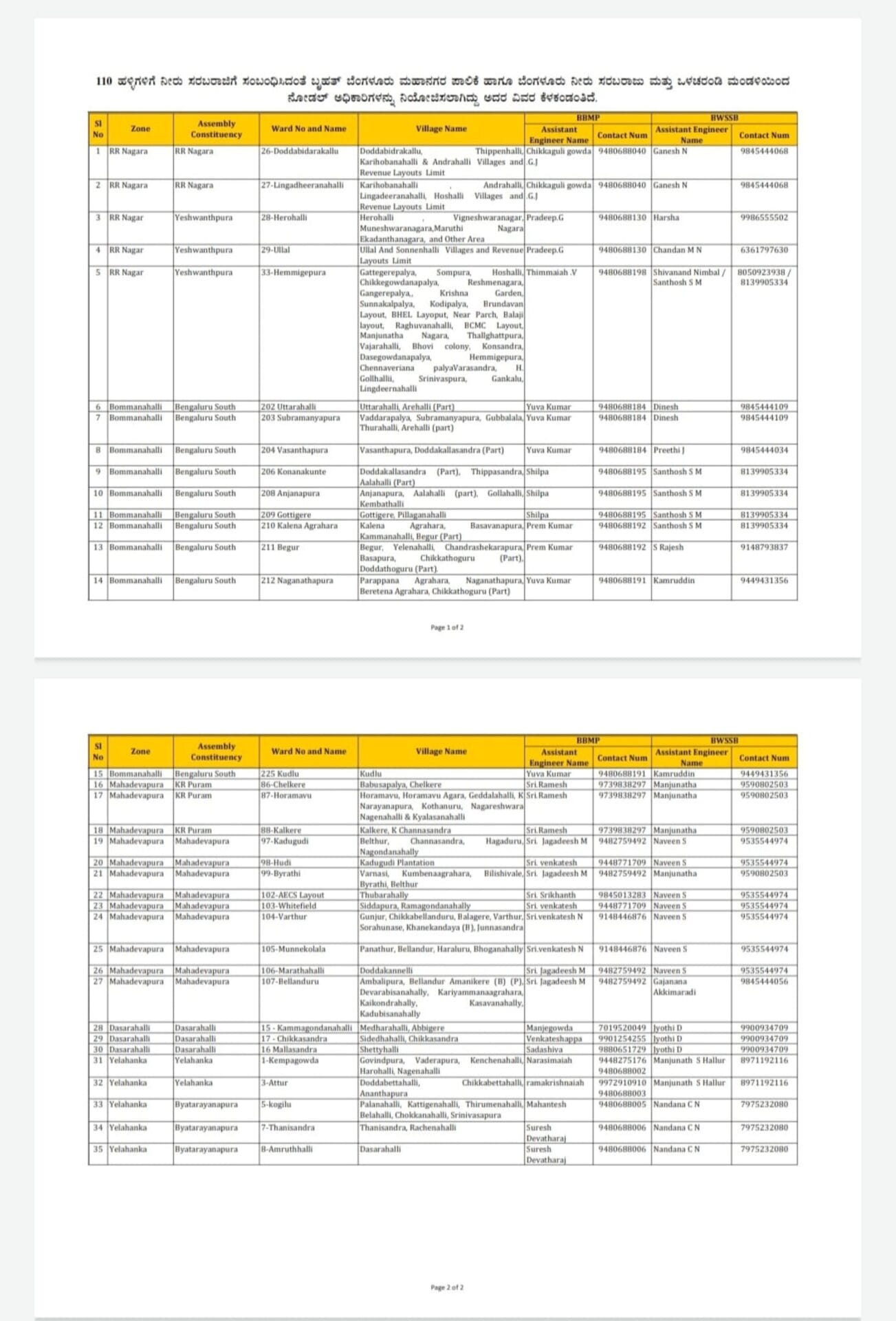In 2023, Citizen Matters published an in-depth series on the rainfall deficit in the city. Over the last two months this year- due to depleting groundwater levels, weak southwest monsoon rains, and reduced water levels in the Cauvery River basin-the water crisis is at our doorsteps.
223 taluks have been declared drought-hit by the state government. As per estimates, 7,408 villages and 1,115 wards in urban local bodies are at risk of drinking water shortage.
The state government, Bruhat Bangalore Mahanagara Palike (BBMP) and the Bangalore Water Supply and Sewerage Board (BWSSB) have stepped in to take stock of the crisis.
The outskirts of the city have been by far the worst affected and there are large communities coming up in areas with no available water supply. Relying on water tankers is, as of now, a knee-jerk response to the current crisis, one that has been beset by challenges.
Read more: Over 100 years of Bengaluru rains decoded
Furthermore, the pricing of private water tankers has been an issue, something the state government has decided to take charge of. To give an overview, in a survey conducted by OpenCity, in association with Bangalore Apartments’ Federation (BAF), as of February 2024, the median rate of water tankers was Rs. 130 per KL; approximately, Rs. 800 for a 6,000 litre tanker. While rates are the lowest in Electronics City, they are highest in Horamavu, Yelahanka and RR Nagar. Most of the apartments in the outer areas are also heavily dependent on private tankers, ordering them daily for their needs. Outer areas are not serviced by BWSSB/Cauvery Water.
Industrial areas have also been affected, with Peenya industrial area being one of the worst hit.

Govt monitors water tankers
Following complaints by residents about the high price of private water tankers, on March 4th, Karnataka Deputy Chief Minister, DK Shivakumar, announced that the state government will monitor water tankers in Bengaluru. The civic body has assigned 110 nodal officers in 110 villages in the outer areas. All water tankers have to register with the BBMP by March 7th. The government is to fix the maximum price.
This move by the government has not been welcomed by private water tankers. Several apartments set up notices for its residents that Regional Transport Offices (RTOs), under the Karnataka Transport Department, have seized 163 water tankers so far. On March 5th, owners of about 50 private water tankers protested at Jambusavari Dinne in JP Nagar.
There are several other measures undertaken to take stock of water scarcity. The BBMP has set up a war room, helplines, and grievance centres in wards to address complaints. Some apartments are doing their all to take immediate steps to ensure minimum use of water, from banning washing of vehicles to suggesting residents use disposable items like paper plates.
However, as per this report, residents have complained that the BBMP has failed in providing water.
Allocations
The government has allocated Rs. 556 crores to address the crisis. Shivakumar has asked each MLA to utilise their grant of Rs. 10 crores in their respective constituencies. The BBMP has allocated Rs. 148 crores, and the BWSSB has earmarked Rs. 128 crores to address water scarcity.
Read more: Bengaluru’s changing rainfall patterns: expert points to climate change
Solutions, helpline numbers
Water expert, S Vishwanath, tweeted that a major part of the groundwater crisis in Bengaluru is the draining of Bellandur and Varthur Lakes for desilting. As an emergency measure just filling them with tertiary treated wastewater will fill aquifers up to 10 kilometres.
BAF has been encouraging water conservation in households. The tips shared include:
- Learn how to turn rejection into reflection by repurposing RO reject water for cleaning purposes
- Take on the Half Bucket Bath Challenge and make a real difference in water conservation
- Upgrade your tap with water aerators for an eco-friendly solution that saves water effortlessly
Reach out to the BBMP helpline in 110 villages in outer areas: 1533; Contact BWSSB helpline: 1916 regarding any drinking water shortage.
An online petition by Jhatkaa.org is demanding that “the BWSSB and BBMP adopt and implement concrete measures to ensure adequate water supply for Bengaluru’s residents.”
Write to us at bengaluru@citizenmatters.in or comment below about solutions you are adopting to conserve water.